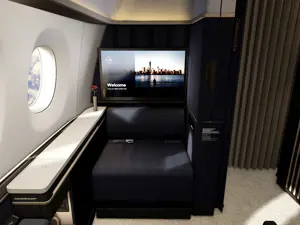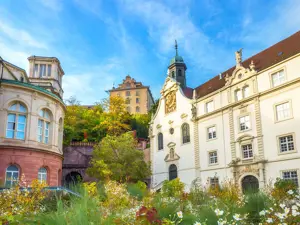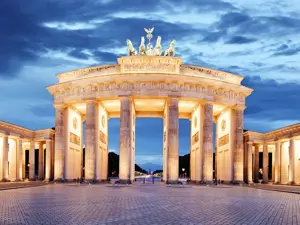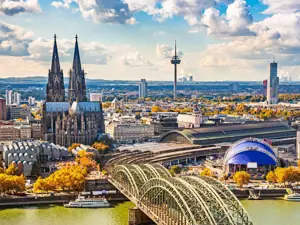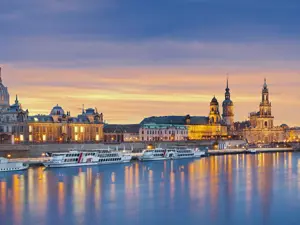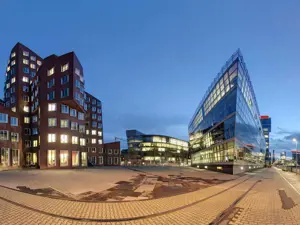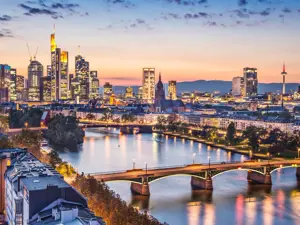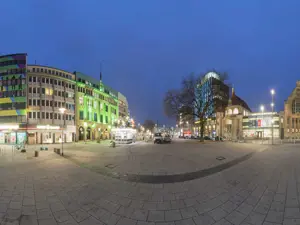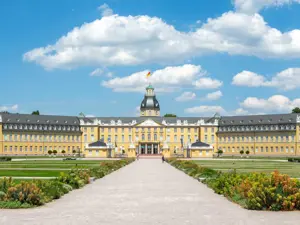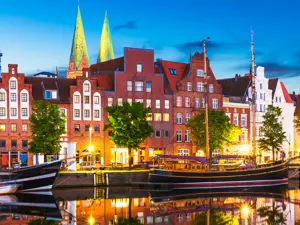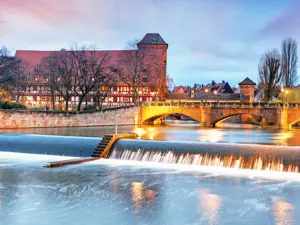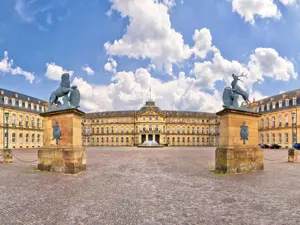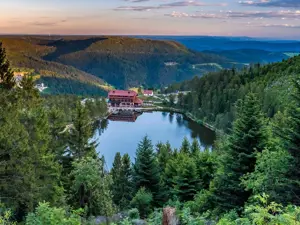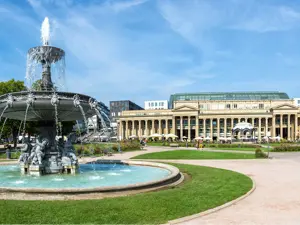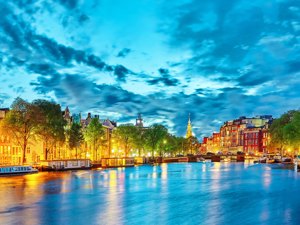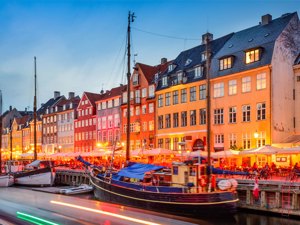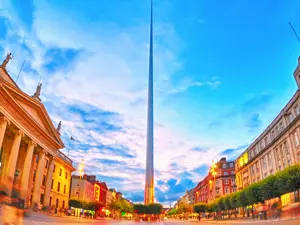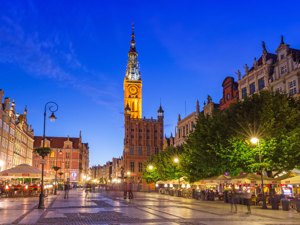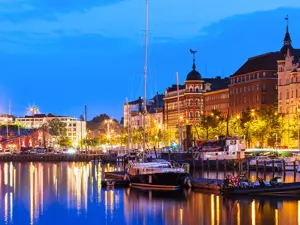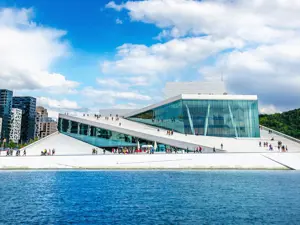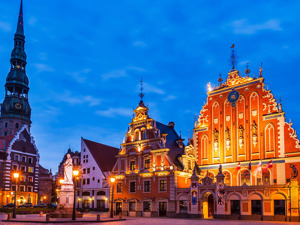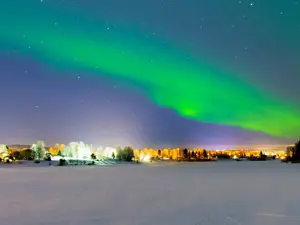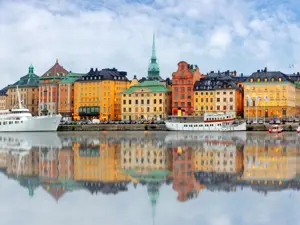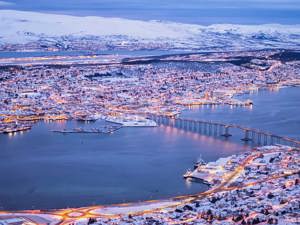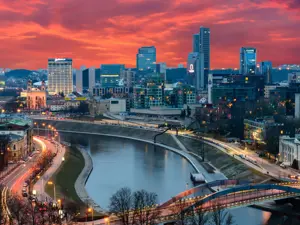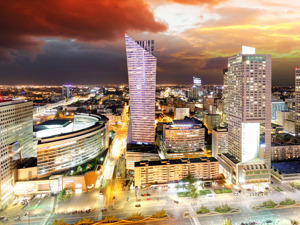The city of the four musicians
The city of Bremen instinctively brings to mind the famous tale of the Brothers Grimm, who told of the adventure of four farm animals: a donkey, a dog, a cat and a cockerel, who at a certain point of their life, tired of being badly treated by their masters who considered them to be past their prime, decided to move to the city of Bremen to become musicians, thus having an easier and more independent lifestyle. On their way to Bremen, they stopped at a house to find some food. Unbeknown to them it was a robbers’ house, but they managed to frighten the troublesome inhabitants away and remain for ever in that house.
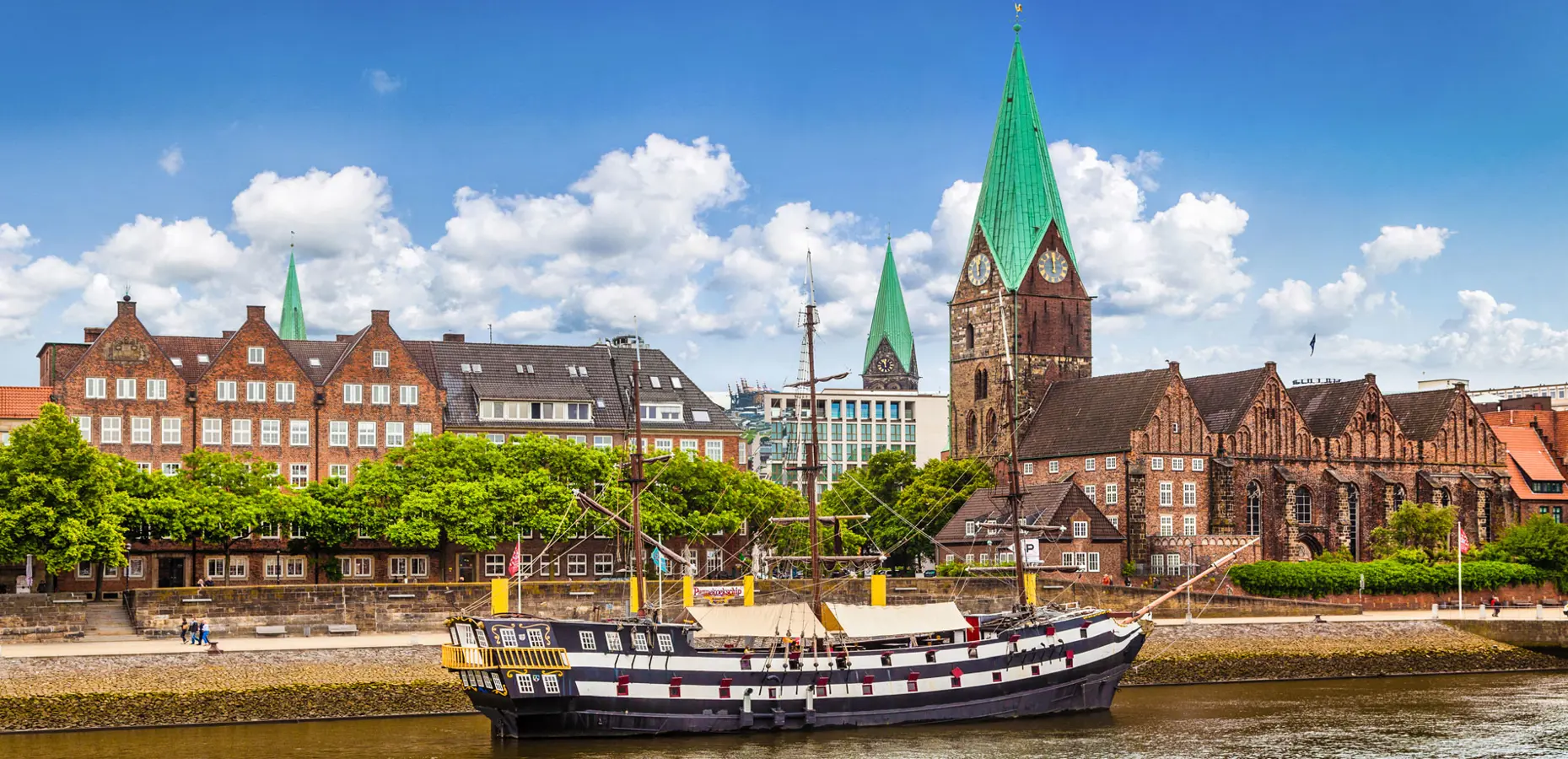
Copyright © Sisterscom.com / Shutterstock
But Bremen, beyond its fairytale aura, attested by the celebrated bronze monument of the four musicians in one of the city squares, is one of Germany’s best known and most important cities, the beating heart of the north west of the country, chief town of ‘Land Bremen’ (‘State of Bremen’) and Germany’s second port.
Bremen Town Hall
Built on the River Weser, it is from this river that the name of its particular Renaissance style is derived, which combines elements of Italian Renaissance with those typical of Eastern Europe. Clay extracted from the river was used to make important public buildings, including Bremen Town Hall, which is abundant with pediments, spires and windows, and was declared a UNESCO World Heritage Site in 2004.
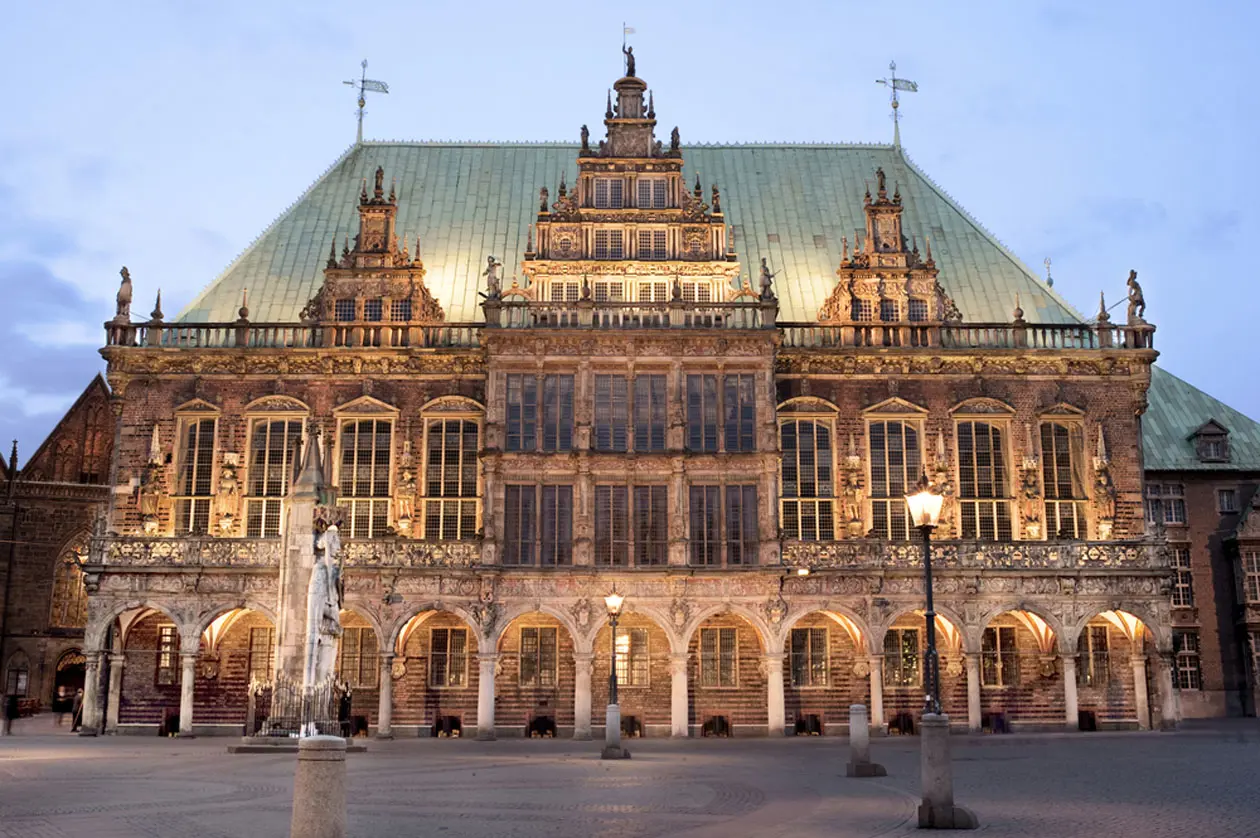
In front of the Town Hall, in the vast Marktplatz, stands a towering 10-metre tall statue of Roland, paladin and symbol of the freedom of which the city - a free Hanseatic city since the Middle Ages - has always been proud. The Hanseatic League was an association of approximately 100 cities and towns that created a monopoly on trade between towns in Germany, the Netherlands, the Baltic countries, Russia and London.
The Schnoor district in Bremen
Bremen still preserves important reminders of this opulent past, including the oldest and most striking district, Schnoor, which consists of a collection of narrow fifteenth- and sixteenth-century houses, once the home of fishermen and merchants, and today the site of shops of all types; and the Maritime Mile at Vegesack, which preserves the seafaring traditions of the city. Here you can see the last training ship, the Schulschiff Deutscheland, which is still intact, and the Bottcherstrasse, a lane of houses and museums, workshops and a carillon of thirty bells that ring once a day.
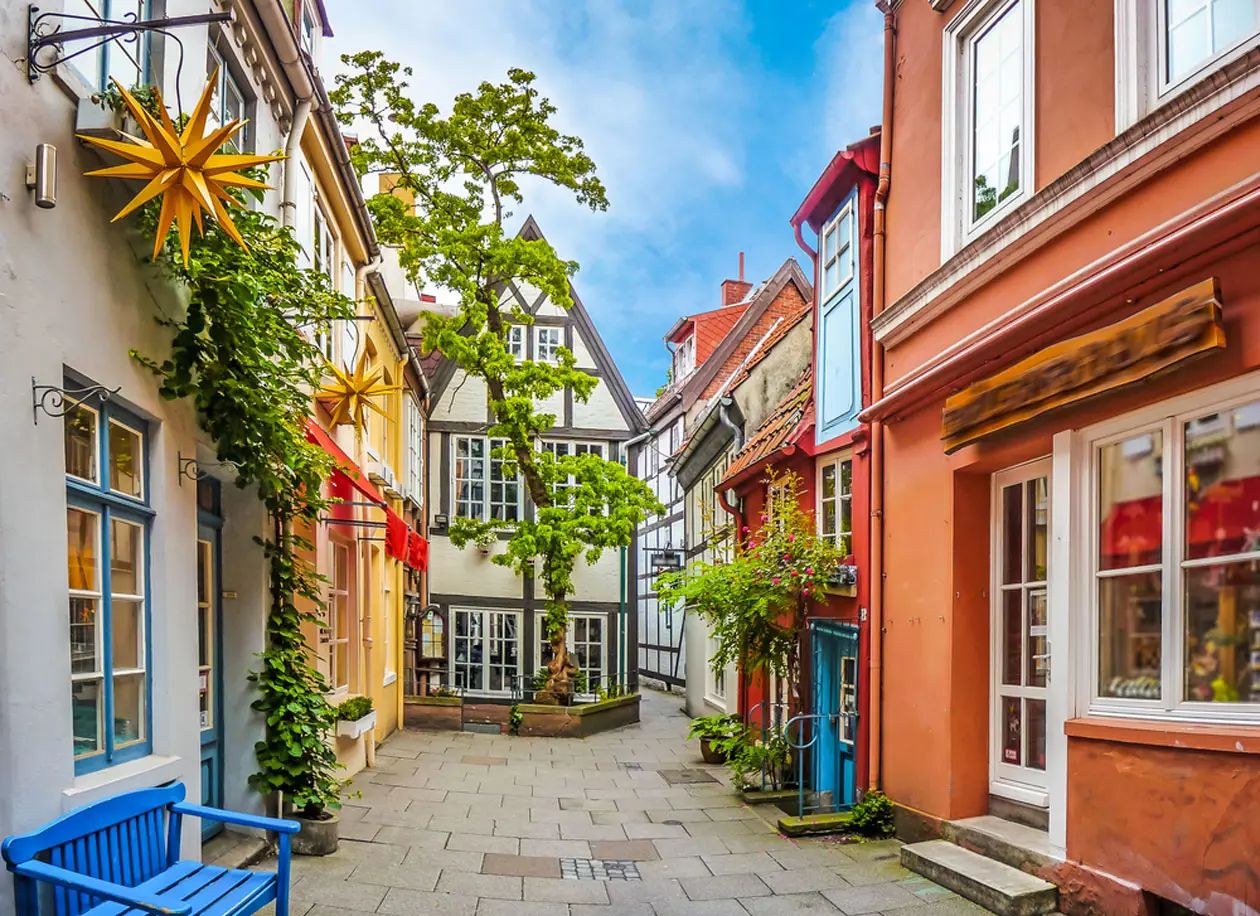
There are also plenty of streets filled with shops and alehouses with local specialities, such as Schlachte Promenade, where you can also find a bustling antiques market and flea market.
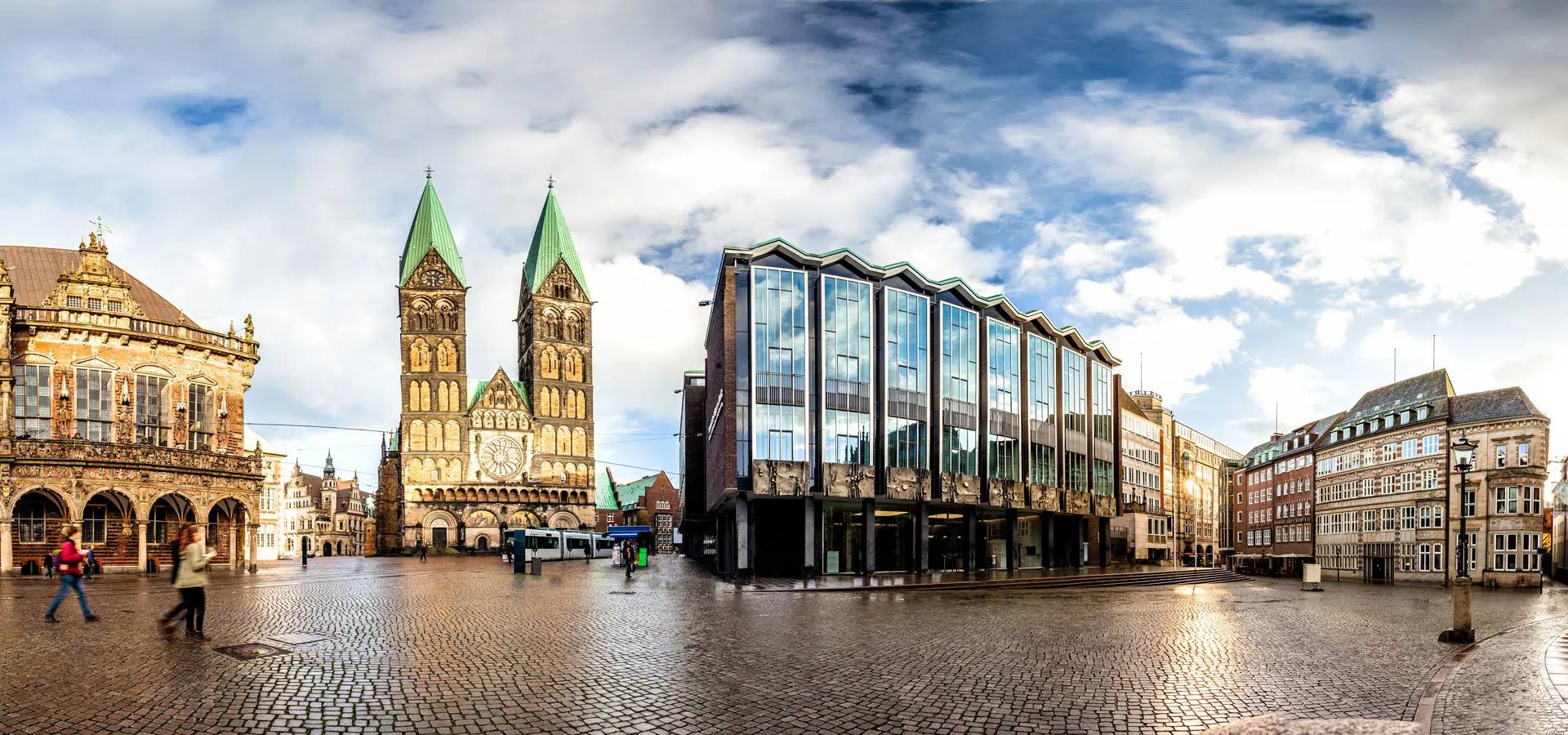
In August and September, the city is animated by the Bremen Music Festival, which attracts thousands of artists from all over the world. Always brimming with events, Bremen hosts the oldest folk festival in Germany, the Freimarkt, which takes place in October, as well as one of the most imaginative and lavish Christmas markets in the entire country.
Bremen: beer, ice wine and aromatic coffee
Bremen is well known among connoisseurs for its extremely pure beer, the renowned Beck’s, and for its aromatic coffee (the first place in the world to serve coffee in a cup was opened here in the seventeenth century) and chocolate.
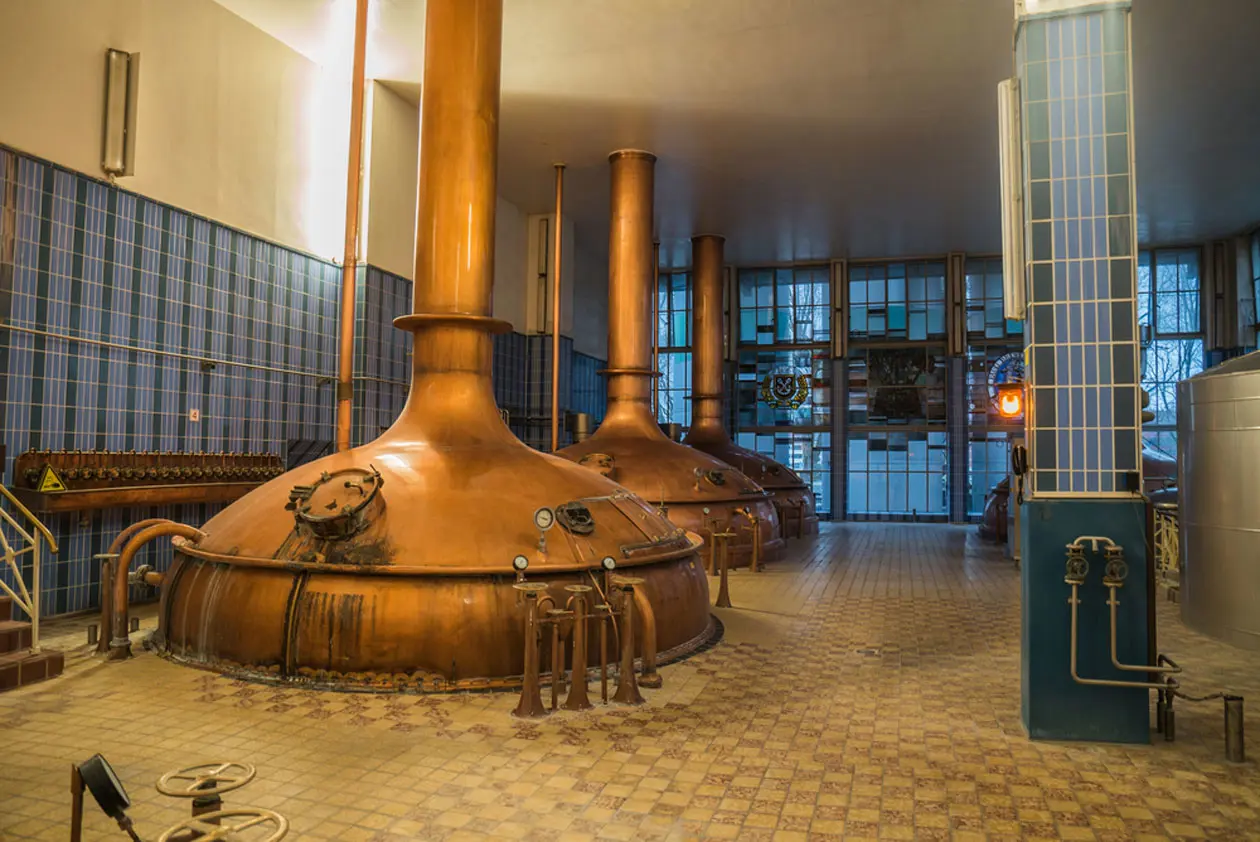
Another interesting place is the immense winery of over 600,000 bottles of German wines situated under the medieval vaults of the Rathaus, the Town Hall, including the particularly celebrated ice wines (eiswein) from theSarre and Moselle, with their unique aromas of dried fruit, rose and spices.
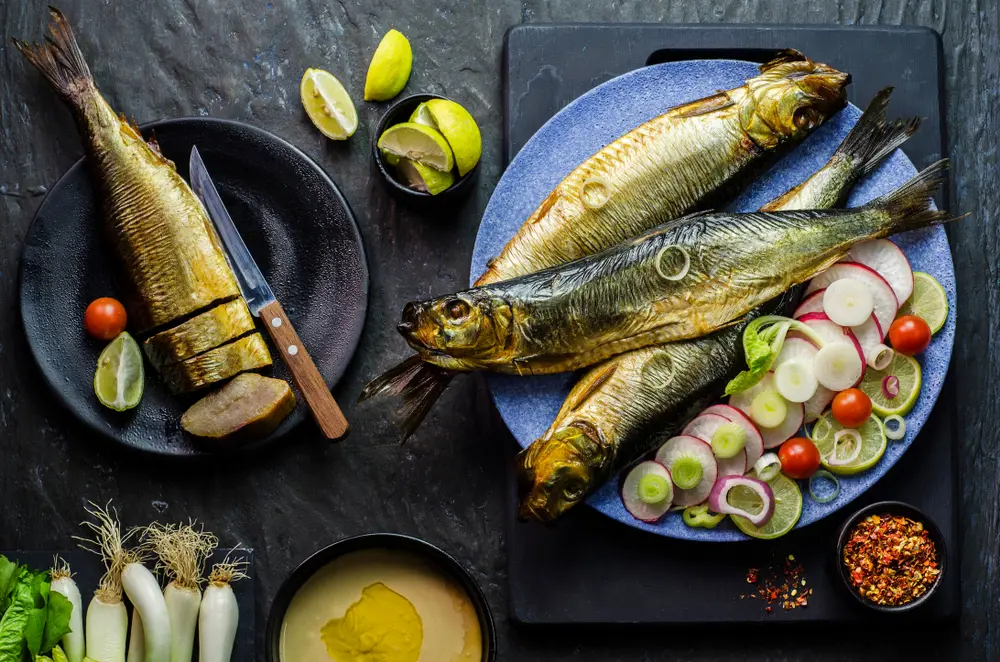
Gastronomy of Bremen
Even the cuisine, which makes Bremen the gastronomic capital of northern Germany, offers highly regarded dishes, such as venison stew, served with mushrooms, red cabbage and potatoes and a sauce of elderberries and ginger, or, staying with the fishing theme, the famous herrings of Vegesack and dried eels.
For dessert, what better than an apple strudel made according to the oldest local traditions? But also a chocolate ‘tree cake’, a sweet made with layers of chocolate and cream - a genuine local delicacy.
For dessert, what better than an apple strudel made according to the oldest local traditions? But also a chocolate ‘tree cake’, a sweet made with layers of chocolate and cream - a genuine local delicacy.
Text of Anna Glik
Updated by Alisè Vitri
Avion Tourism Magazine
Photos: Copyright © Sisterscom.com / Shutterstock
Tourism Board
www.bremen-tourism.de
Partnership with Booking.com
Where to sleep in Bremen
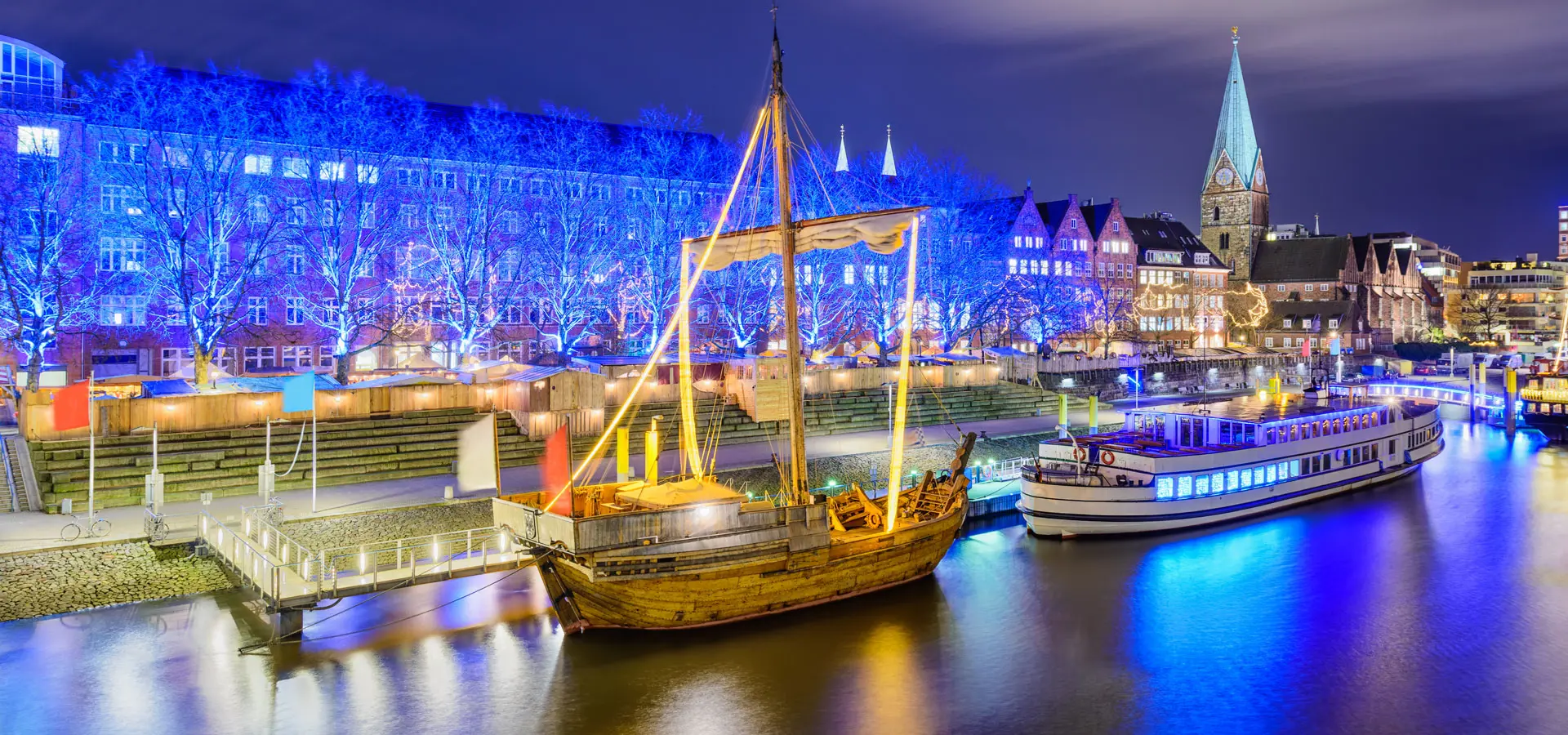
Bremen is a welcoming city and offers different possibilities for accommodation.
To find the ideal hotel and the best offers you can do a search for the stars but also for districts or landmarks.
LANDMARKS
WHERE TO GO in bremen
Monuments of Bremen
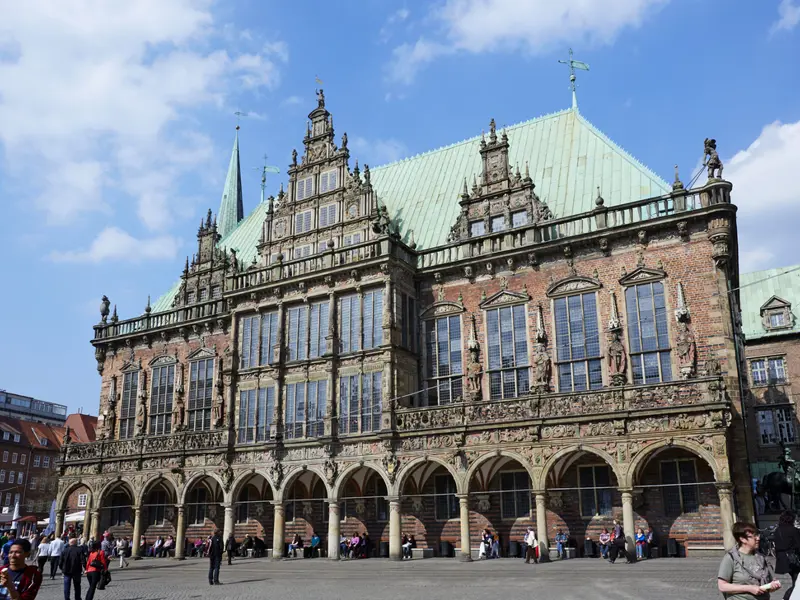
The town hall and Roland statue in Bremen
Marktplatz
The 600-year-old Bremen Town Hall is a historic building built in the Gothic style. In later years, in 1600 the Weser Renaissance-style façade was added and previously, in 1404, was built the statue of Roland, Bremer Roland, always in the same square, as a symbol of freedom and justice. Since 2004, they have been protected by Unesco as a piece of World Heritage.
The 600-year-old Bremen Town Hall is a historic building built in the Gothic style. In later years, in 1600 the Weser Renaissance-style façade was added and previously, in 1404, was built the statue of Roland, Bremer Roland, always in the same square, as a symbol of freedom and justice. Since 2004, they have been protected by Unesco as a piece of World Heritage.
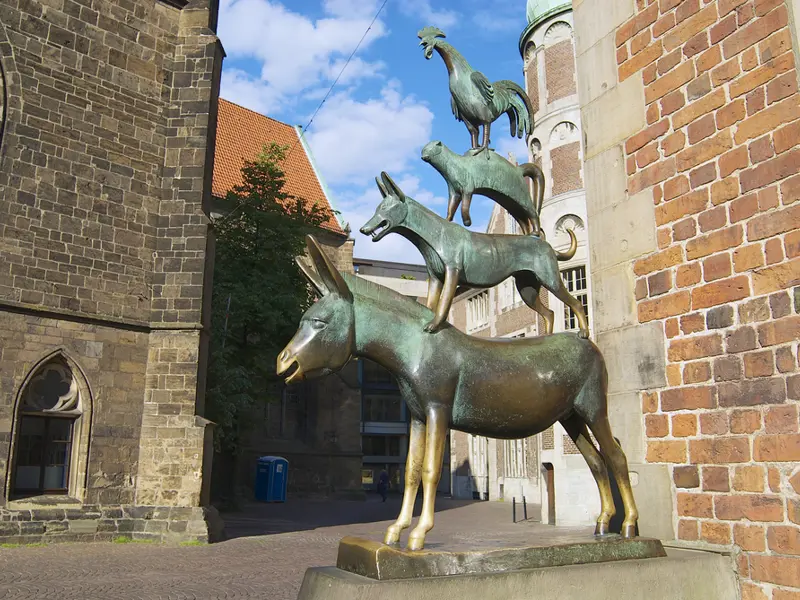
The Bremen Town Musicians
The Bremen Town Musicians is a folktale recorded by the Brothers Grimm and in this German city, on the west side of the Town Hall, is possible to see the famous bronze statue of the animals made in 1951 by the artist Gerhard Marcks. This four animals, a donkey, a dog, a cat and a rooster, protagonists of the folktale by Brothers Grimm, are a part of Bremen and are wherever in the old quarter.
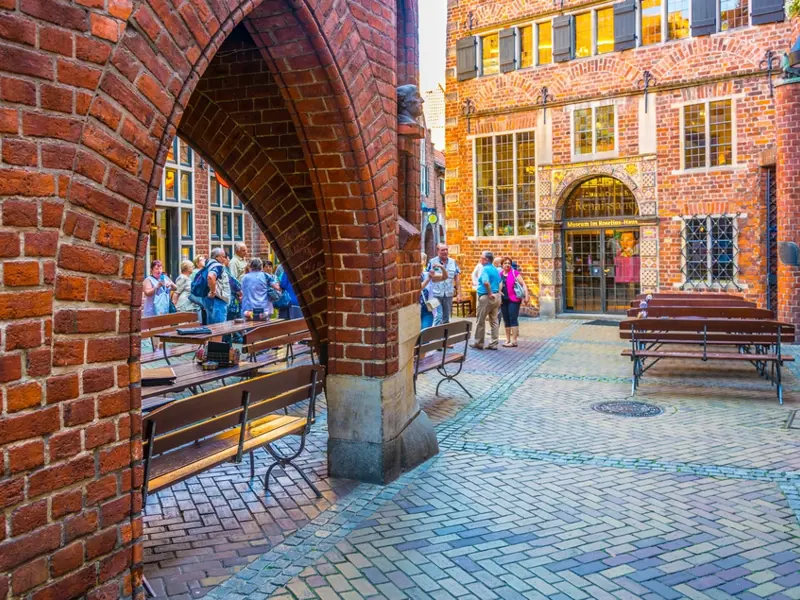
Böttcherstraße
The Böttcherstraße, just south of the market square, is a true work of art of 110 meters that enter you in a whole world in the Expressionist style. It was built in the Twenties with shops, gastronomy, museums, shops and carillon. Today, in this 110-metre-long architectural contains restaurants, handicraft shops, two museums and a carillon consisting of 30 Meissen porcelain bells.

The Schnoor quarter in Bremen
The Schnoor quarter is a famous oldest quarter of the city of Bremen composed of small buildings and houses of the fifteenth and sixteenth centuries. This pretty little quarter takes its name from the fact that its many old buildings line the narrow lanes like pearls on a string (“Schnur” in German). Nowhere else in Bremen is possible to find so many restaurants, arts & crafts boutiques and souvenir shops in such a small area as in the Schnoor, the oldest quarter of the city.
Museums of Bremen
Kunsthalle Bremen
Am Wall 207
Founded by the citizens of Bremen in 1823, making it one of the oldest art associations in Germany. Over the centuries, a rich and diverse collection has been assembled, containing outstanding paintings and sculptures as well as precious holdings of graphic art, enclosing masterpieces from 600 years of history of art. Beyond the collection, the Kunsthalle offers a constantly changing series of small and large-scale exhibitions to visitors as well as an extensive art educational program for all age groups.
Founded by the citizens of Bremen in 1823, making it one of the oldest art associations in Germany. Over the centuries, a rich and diverse collection has been assembled, containing outstanding paintings and sculptures as well as precious holdings of graphic art, enclosing masterpieces from 600 years of history of art. Beyond the collection, the Kunsthalle offers a constantly changing series of small and large-scale exhibitions to visitors as well as an extensive art educational program for all age groups.
Excursions in Bremen
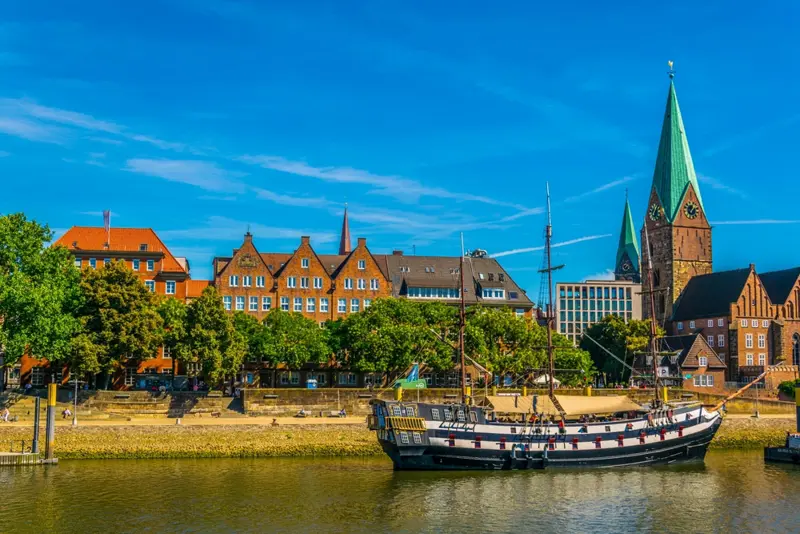
La Schlachte Embankment
After the city cultural tour, for a break should stroll down to the Schlachte promenade along the river Weser. Its numerous pubs and bars, many with outdoor seating areas, make a great place to chill out. An antiques and bric-a-brac market is held here every Saturday during the spring and summer months. In the run-up to Christmas the medieval atmosphere of the Schlachte-Zauber market gets everyone in the right mood for the festive season.
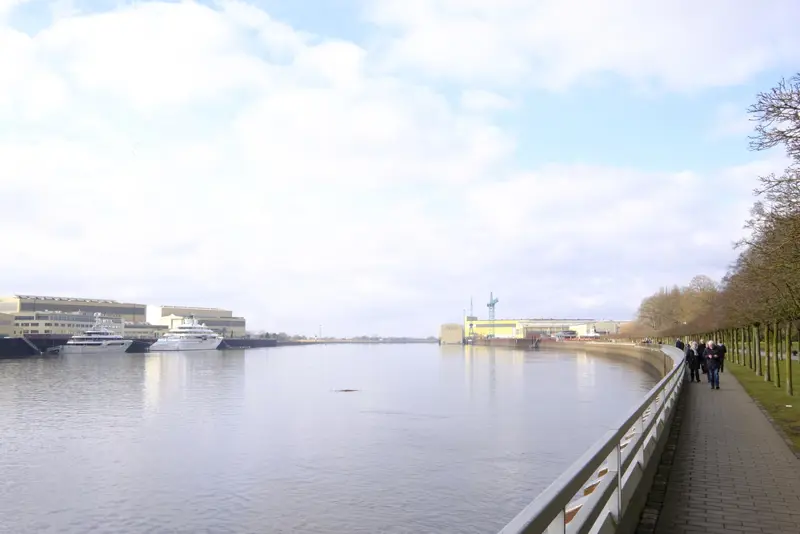
Vegesack Maritime Mile
In Vegesack, about 20 kilometres from the city centre of Bremen, 400 years ago the first artificial harbor of Germany was born and today, in this suburb, is preserved the last German sailing ship still sailing. The Spicarium also offers an interactive exhibition focuses on shipbuilding, navigation, bionics marina and yacht design.
Partnership with GetYourGuide
All tours and excursions
News & Useful info
You might be interested in
Destinations found in the vicinity
Other destinations
Airports nearby Bremen




